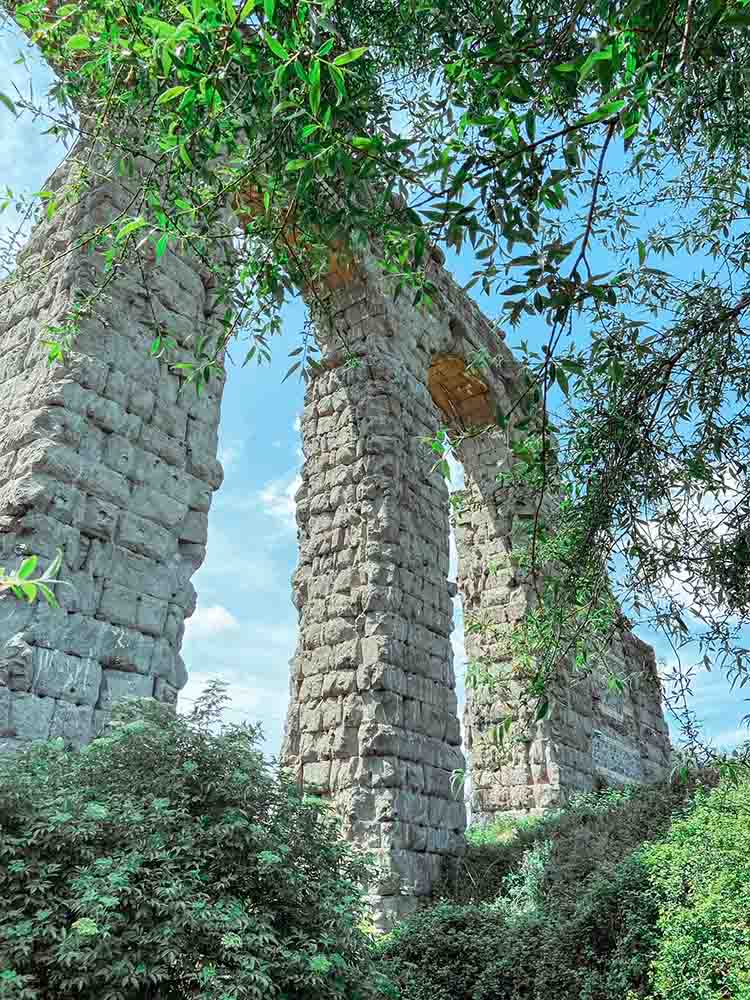


The Aqueduct Park: Masterpieces of Roman Engineering
Duration: 2 hours
The Aqueduct Park
Walking through the Parco degli Acquedotti, one of Rome’s most fascinating parks, you can’t help but think of the film La Grande Bellezza and feel like you’re in an atmosphere suspended in time.
The park, enclosed between the Via Appia and Via Tuscolana, covers about 240 hectares. Its name derives from the presence of seven Roman and papal aqueducts that supplied water to ancient Rome, the immense patrician villas, baths and fountains.
“Water arrived in ancient Rome with a series of triumphal arches“. This is how the great German poet Goethe, during his stay in Rome in 1788, spoke of the great ruins that dominated the Roman countryside and which many European painters celebrated in their drawings and watercolours. Today, those monumental, ancient arches are still there, alongside the remains of patrician villas and monumental tombs, in a rural landscape that has miraculously escaped the urban invasion of the second half of the 20th century.
In the park there are no less than seven aqueducts of the eleven Roman aqueducts: the Anio Vetus, the Anio Novus, the Aqua Marcia, the Tepula, the Aqua Iulia, the Aqua Claudia and the Felice Aqueduct, which is still working, built in 1585 by Pope Sixtus V, Felice Peretti, on the arches of the Acquedotto Marcio. There are other interesting ancient buildings in this area, including the Villa delle Vignacce, the Roma Vecchia farmhouse and the Villa dei Sette Bassi.
Pliny the Elder (23-79 A.D.) wrote: “Whoever will consider carefully the quantity of water for public use in baths, pools, fountains, houses, suburban gardens, villas; the distance from which the water comes, the conduits that have been built, the mountains that have been pierced, the valleys that have been crossed, will have to acknowledge that nothing in the whole world has ever existed more marvellous“.
The Roman aqueducts were very sophisticated constructions, whose quality and technological level was unparalleled for over 1000 years after the fall of the Roman Empire.
Today, most of the conduits are no longer visible, either because many had an underground route or because in several cases, the outer structures of the oldest aqueducts have been overlaid with newer ones over time.
This itinerary can be done on foot or by bicycle and can be combined with the tour of the Appia Antica.
